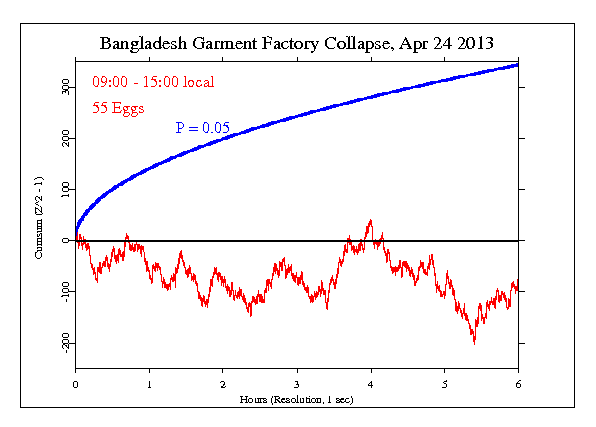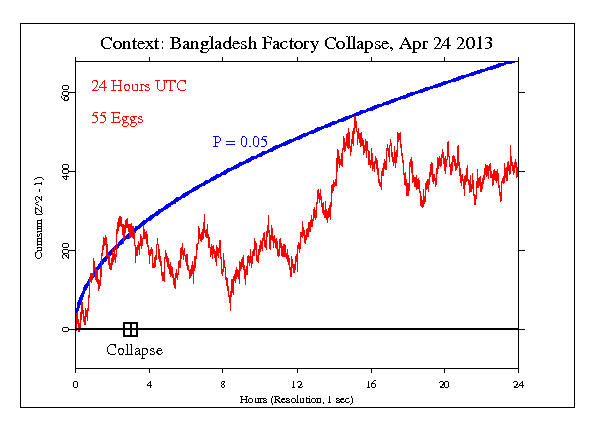|
A garment factory on the outskirts of Dhaka, Bangledesh collapsed on
Wednesday, April 24 2013, killing more than 400 and injuring hundreds
more. Excerpts from an AP news blog provide some timing information and
a glimpse into the horrible tragedy.
Around 8:40 a.m. Wednesday, when the factories had been running for 40
minutes or so, the lights suddenly went off in the building. It was
nothing unusual. Bangladesh's electricity network is poorly maintained
and desperately overburdened. Rana Plaza, like most of the factories in
the area, had its own backup generator, sometimes used dozens of times
in a single day.
A jolt went through the building when the generator kicked on. Again,
this was nothing unusual. Eighteen-year-old Baezid was chatting with a
friend as they checked an order of short-sleeved shirts.
He'd come from the countryside with his family - mother, father and two
uncles - just seven months earlier. Since then, he'd worked seven days a
week, from 8 a.m. to midnight. His salary was about $55 a month. But he
could more than double that by working so many hours, since overtime
pays .37 cents an hour.
Sometime after the generator switched on - perhaps a few moments later,
perhaps a few minutes - another, far larger, jolt shook the floor
violently. The building gave a deafening groan.
The pillars fell first, and one slammed against Baezid's back. He was
knocked to the floor, and found himself pinned from the waist down,
unable to move.
The GCP event was set for 6 hours starting about when the collapse
occurred, which was apparently around 9:00 local time. The result is
Chisquare 21516 on 21600 df, for p = 0.657 and Z = -0.404.

I was quite uncertain about the time of the collapse, and was tempted to
set the full day of the 24th. But instead I used the standard 6 hour
protocol, beginning at my best guess about the time of the collapse. For
context, the following exploration shows the 24 hour UTC day. The
collapse occurred about 03:00 UTC.

It is important to keep in mind that we have only a tiny
statistical effect, so that it is always hard to distinguish
signal from noise. This means that every "success" might be
largely driven by chance, and every "null" might include a real
signal overwhelmed by noise. In the long run, a real effect can
be identified only by patiently accumulating replications of
similar analyses.
|